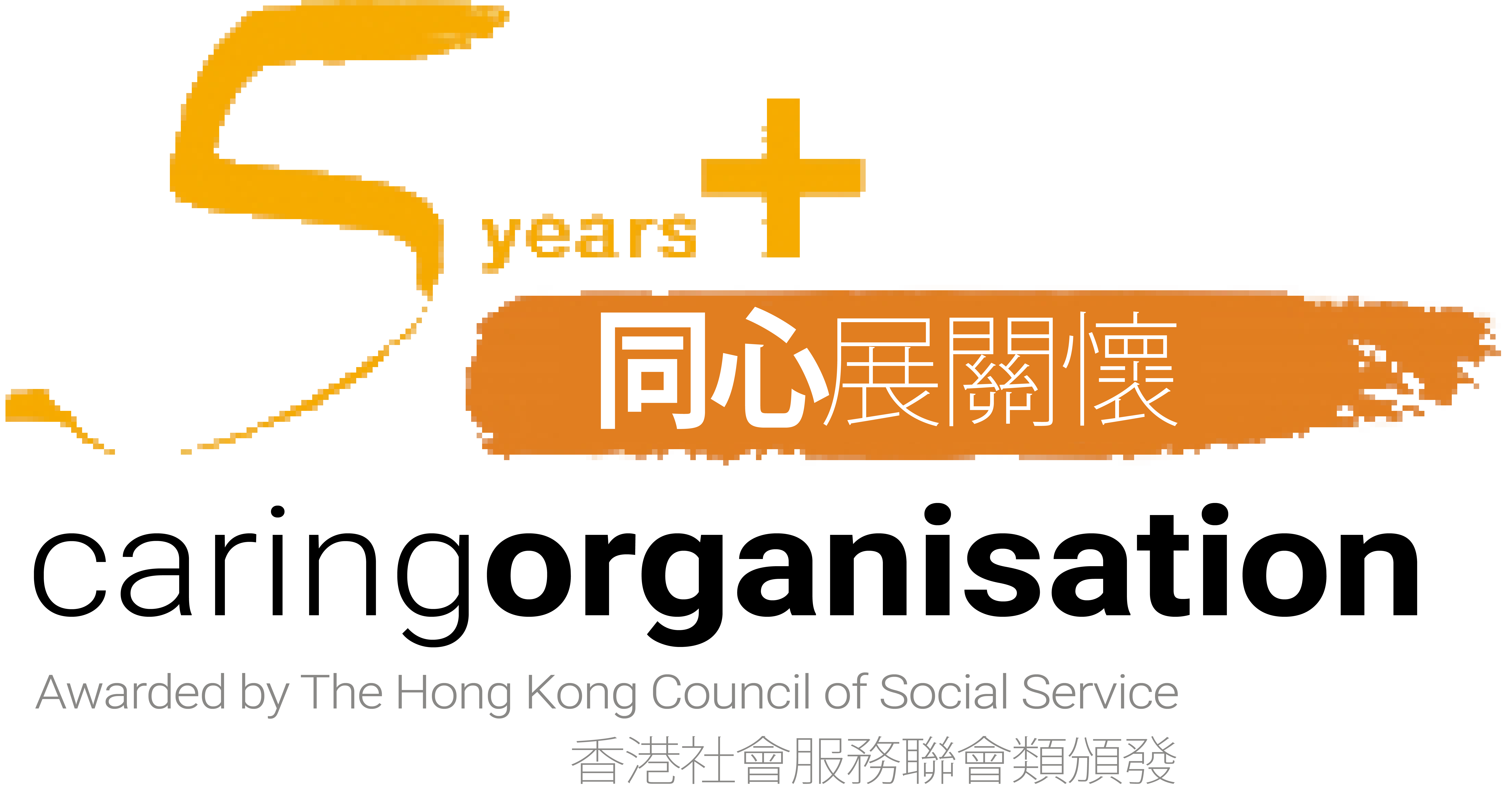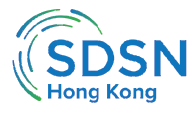Food TranSmarter: A food waste pre-treatment system
The Hong Kong Productivity Council (HKPC) has developed a food waste pre-treatment system, reinventing food waste recycling. The world's first prototype of Food TranSmarter is being tested on the CUHK campus.
With this patented technology, food waste is converted into slurry on-site and is then delivered to the Tai Po Sewage Treatment Works for biogas production.
The challenge: To reduce food waste
tonnes of food waste, composing about 31% of Hong Kong's total municipal solid waste, is disposed of in landfills in Hong Kong every day
Source: Environmental Protection Department (2023).
Monitoring of Solid Waste in Hong Kong – Waste Statistics for 2022.
The optimum solution: Turning food waste into clean energy
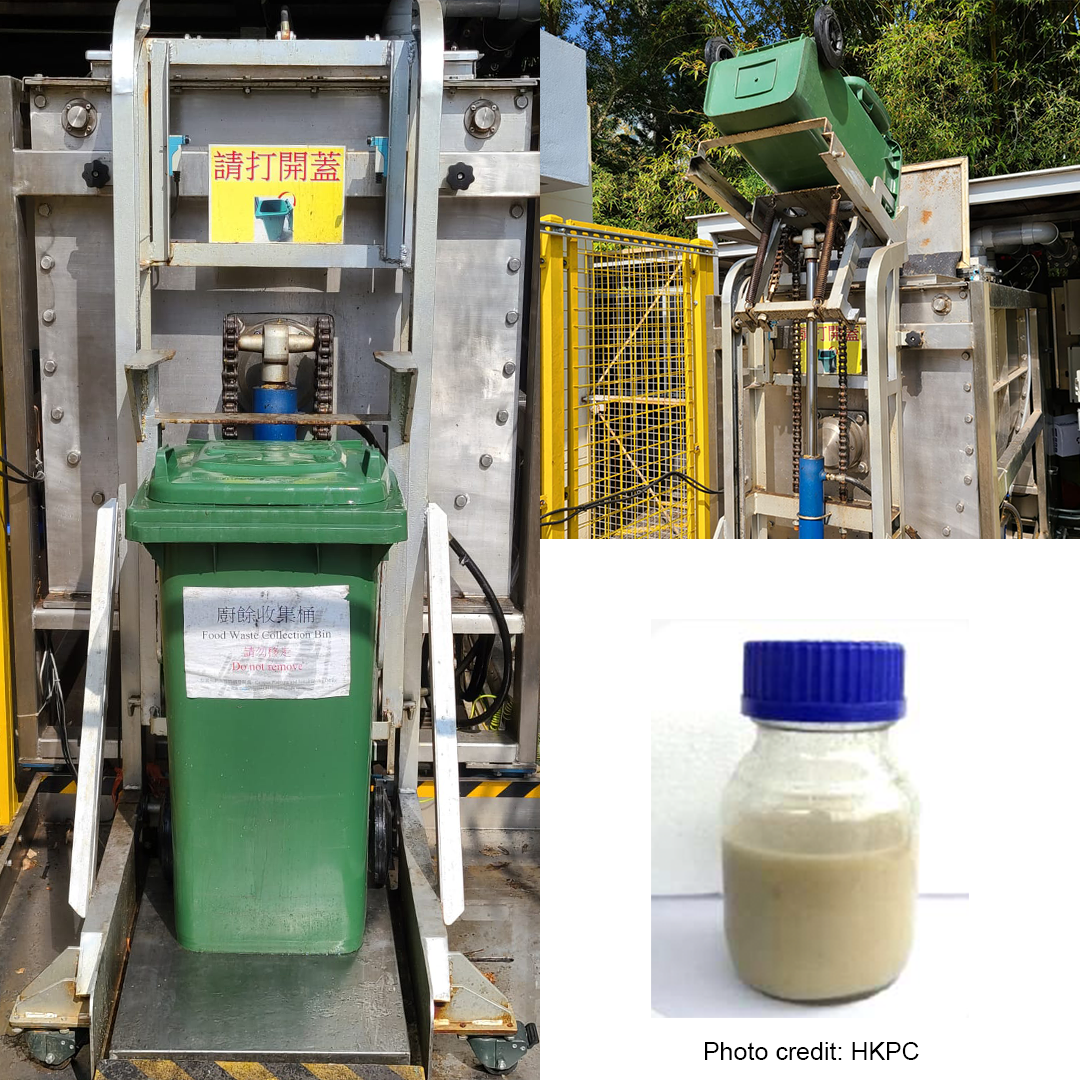
Step 1
Collection and pre-treatment
Food waste is collected and converted into slurry on-site.
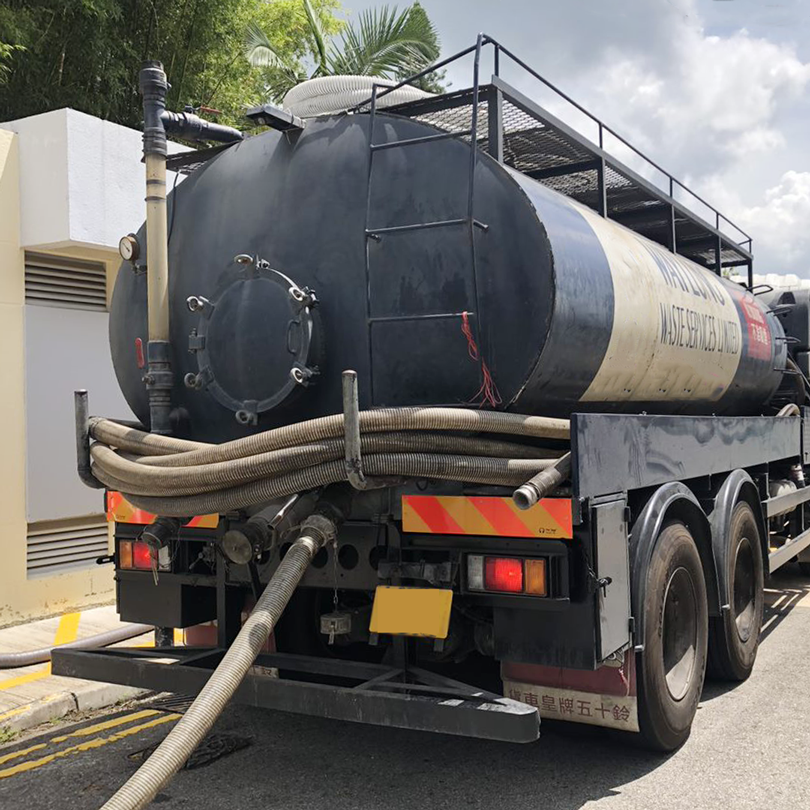
Step 2
Transportation
It only takes 15 minutes to pump the slurry into a suction truck, which delivers it to a nearby waste-treatment facility.
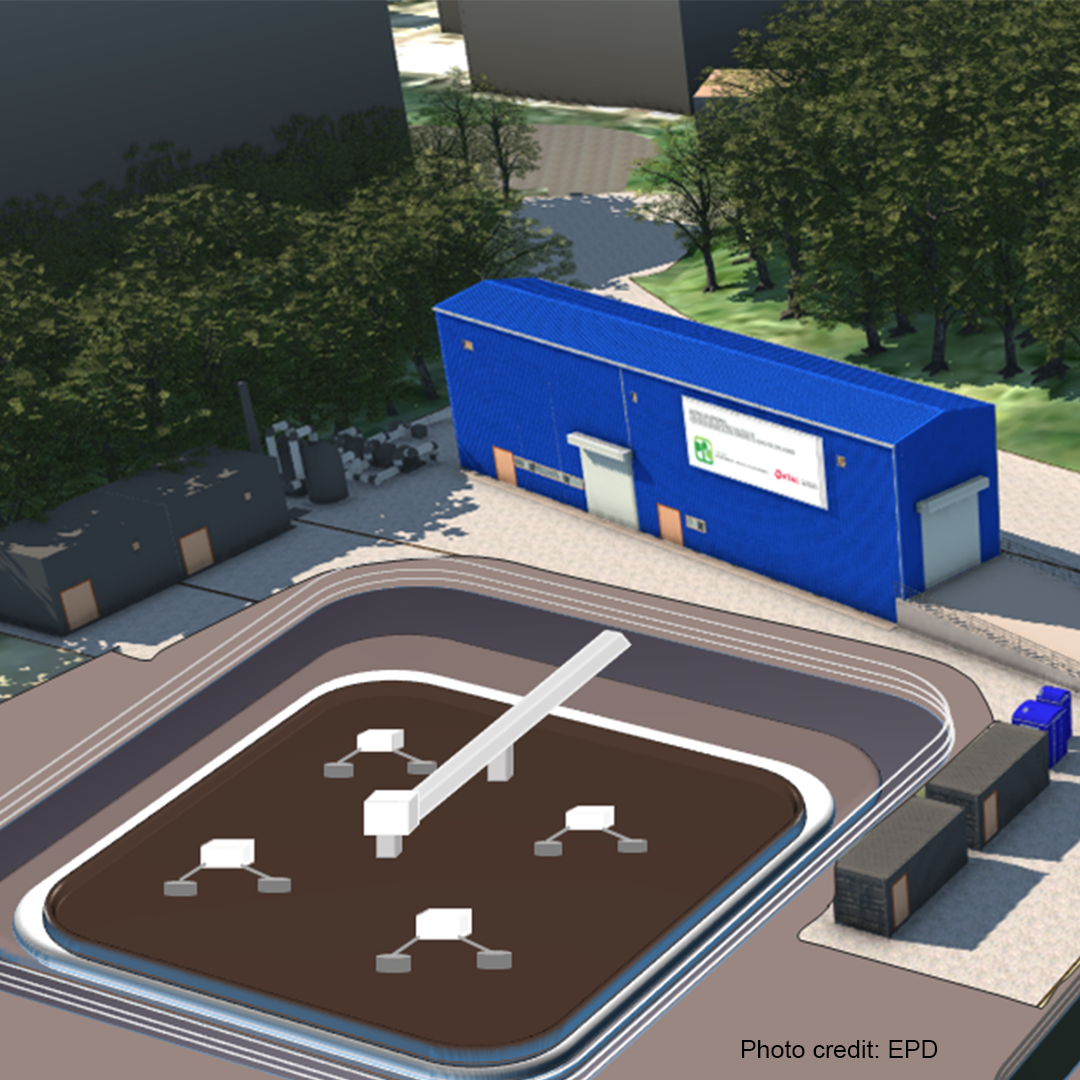
Step 3
Waste-to-energy conversion
At the Tai Po Sewage Treatment Works, the slurry undergoes anaerobic digestion, producing biogas.
Why this is the best practice
This new approach outperforms typical food waste recycling processes because of the following design and operational features:

Hygiene first
A sealed system design allows the slurry to be stored properly with minimal odour nuisance, providing a waste treatment operation that is cleaner than ever.

Efficient Collection
The pumping of slurry into the suction truck is hygienic and can be completed in only 15 minutes.

Reduced trips and cost
Slurry can be stored in the system for days, reducing the collection frequency from daily to every few days when necessary, thus reducing the cost of transport and the carbon footprint.

User friendly
Caterers can load food waste from collection bins into the system at their convenience.

Increased capacity

Educational with Data
A successful HKPC–CUHK collaboration
In September 2020, CUHK and HKPC formed a partnership to test the world's first prototype on the CUHK campus. The 18-month trial has proven successful and the system has continued to serve CUHK canteens since. Every year, the system diverts around 42 tonnes of food waste from the landfills and turns it into energy.
The success of the trial has led to HKPC exploring further applications of Food TranSmarter. New users include the Airport Authority and 10 government venues and private premises, and the number is growing.
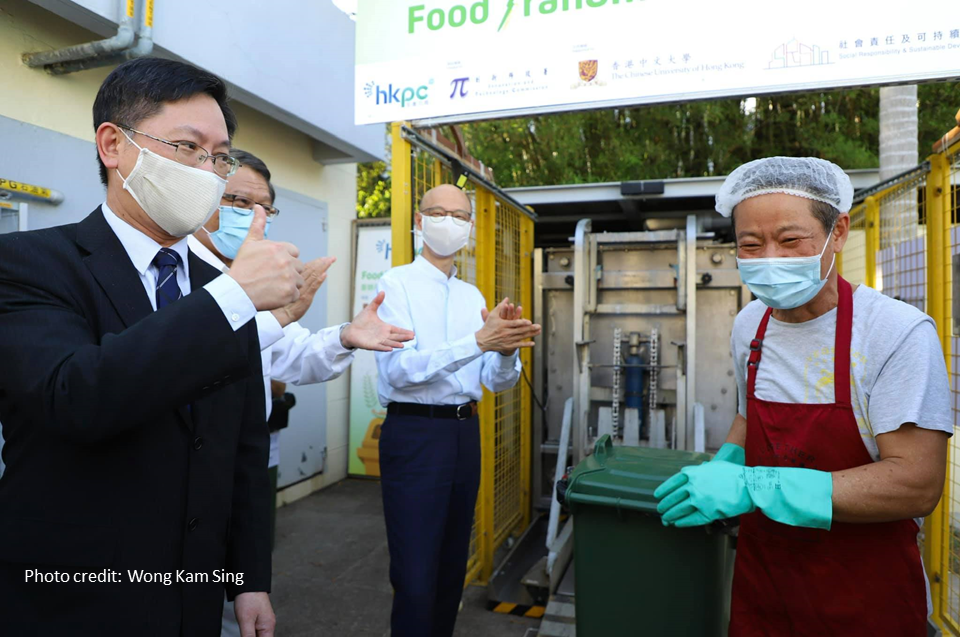
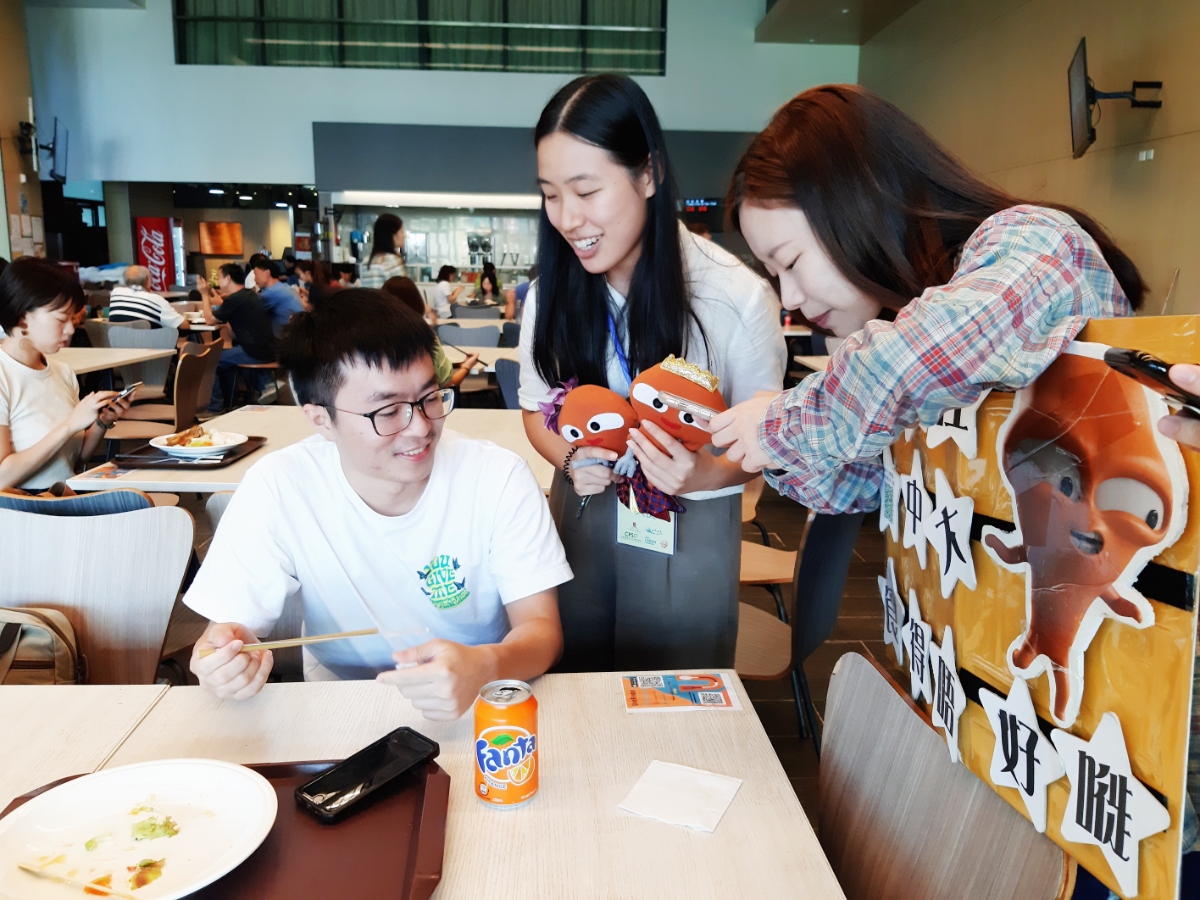
Love Food, Hate Waste @CUHK
While food waste treatment technology is advancing and can help us recover resources, we still accord top priority to waste reduction at source. Check out our campus-wide sustainability initiative 'Love Food, Hate Waste @CUHK' to learn how we educate our members and curb food waste on campus.











